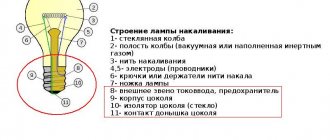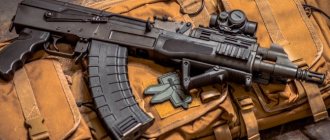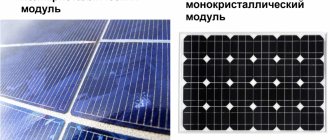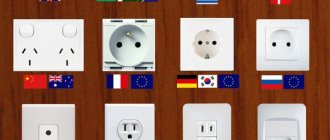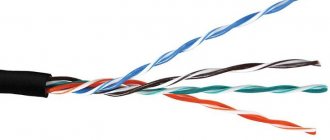People first used capacitors to store electricity. Then, when electrical engineering went beyond laboratory experiments, batteries were invented, which became the main means of storing electrical energy. But at the beginning of the 21st century, it is again proposed to use capacitors to power electrical equipment. How possible is this and will batteries finally become a thing of the past?
The reason why capacitors were replaced by batteries was due to the significantly greater amounts of electricity that they are capable of storing. Another reason is that during discharge the voltage at the battery output changes very little, so that a voltage stabilizer is either not required or can be of a very simple design.
The main difference between capacitors and batteries is that capacitors directly store electrical charge, while batteries convert electrical energy into chemical energy, store it, and then convert the chemical energy back into electrical energy.
During energy transformations, part of it is lost. Therefore, even the best batteries have an efficiency of no more than 90%, while for capacitors it can reach 99%. The intensity of chemical reactions depends on temperature, so batteries perform noticeably worse in cold weather than at room temperature. In addition, chemical reactions in batteries are not completely reversible. Hence the small number of charge-discharge cycles (on the order of thousands, most often the battery life is about 1000 charge-discharge cycles), as well as the “memory effect”. Let us recall that the “memory effect” is that the battery must always be discharged to a certain amount of accumulated energy, then its capacity will be maximum. If, after discharging, more energy remains in it, then the battery capacity will gradually decrease. The “memory effect” is characteristic of almost all commercially produced types of batteries, except acid ones (including their varieties - gel and AGM). Although it is generally accepted that lithium-ion and lithium-polymer batteries do not have it, in fact they also have it, it just manifests itself to a lesser extent than in other types. As for acid batteries, they exhibit the effect of plate sulfation, which causes irreversible damage to the power source. One of the reasons is that the battery remains in a state of charge of less than 50% for a long time.
With regard to alternative energy, the “memory effect” and plate sulfation are serious problems. The fact is that the supply of energy from sources such as solar panels and wind turbines is difficult to predict. As a result, the charging and discharging of batteries occurs chaotically, in a non-optimal mode.
For the modern rhythm of life, it turns out to be absolutely unacceptable that batteries have to be charged for several hours. For example, how do you imagine driving a long distance in an electric vehicle if a dead battery keeps you stuck at the charging point for several hours? The charging speed of a battery is limited by the speed of the chemical processes occurring in it. You can reduce the charging time to 1 hour, but not to a few minutes. At the same time, the charging rate of the capacitor is limited only by the maximum current provided by the charger.
The listed disadvantages of batteries have made it urgent to use capacitors instead.
Using an electrical double layer
For many decades, electrolytic capacitors had the highest capacity. In them, one of the plates was metal foil, the other was an electrolyte, and the insulation between the plates was metal oxide, which coated the foil. For electrolytic capacitors, the capacity can reach hundredths of a farad, which is not enough to fully replace the battery.
Comparison of designs of different types of capacitors (Source: Wikipedia)
Large capacitance, measured in thousands of farads, can be obtained by capacitors based on the so-called electrical double layer. The principle of their operation is as follows. An electric double layer appears under certain conditions at the interface of substances in the solid and liquid phases. Two layers of ions are formed with charges of opposite signs, but of the same magnitude. If we simplify the situation very much, then a capacitor is formed, the “plates” of which are the indicated layers of ions, the distance between which is equal to several atoms.
Supercapacitors of various capacities produced by Maxwell
Capacitors based on this effect are sometimes called ionistors. In fact, this term not only refers to capacitors in which electrical charge is stored, but also to other devices for storing electricity - with partial conversion of electrical energy into chemical energy along with storing the electrical charge (hybrid ionistor), as well as for batteries based on double electrical layer (so-called pseudocapacitors). Therefore, the term “supercapacitors” is more appropriate. Sometimes the identical term “ultracapacitor” is used instead.
Best Electrolytic Capacitors for Audio
Electrolytic devices are characterized by significant capacity and long service life. They are reliable, inexpensive, can operate at constant voltages, but are not suitable for high-quality equipment that requires detailed sound.
Elna Silmic II
The leader among electrolytic components are audio amplification capacitors from Elna Silmic II. These are budget devices with good technical characteristics. Used to play high quality music.
The case is made of aluminum, which reliably protects the inside from external influences. Inside there are silk fiber and oxygen-free thread, providing decent sound at all frequencies without distortion. The sizes are small, so the product can be used together with different equipment.
Advantages:
- Stable operation at low, medium, high frequencies;
- Pleasant natural sound without distortion;
- Low cost;
- Sold in almost all electronic components stores.
Flaws:
- Low operating voltage.
Mundorf E-Cap AC Plain
A non-polar capacitor for sound from a German manufacturer is made with smooth plates. The use of such technology significantly improves sound quality with minimal losses.
But the use of smooth facings caused an increase in the dimensions of the final product, which must be taken into account when choosing. The charge storage device is able to operate stably over a long period.
Advantages:
- High-quality assembly;
- Long work;
- Decent sound characteristics;
- Minimum losses;
- Low cost.
Flaws:
- Large size.
Technical implementation
The supercapacitor consists of two plates of activated carbon filled with electrolyte. Between them there is a membrane that allows the electrolyte to pass through, but prevents the physical movement of activated carbon particles between the plates.
It should be noted that supercapacitors themselves have no polarity. In this they fundamentally differ from electrolytic capacitors, which, as a rule, are characterized by polarity, failure to comply with which leads to failure of the capacitor. However, polarity is also applied to supercapacitors. This is due to the fact that supercapacitors leave the factory assembly line already charged, and the marking indicates the polarity of this charge.
What are the advantages of a capacitor compared to a battery?
- • Instantly. The ionistor copes well with the peak inrush current, accumulating and releasing energy almost instantly.
- • Fast. It charges not in an hour or two, but in a matter of seconds (that’s why, for example, NASA uses supercapacitors in space).
- • Safe. Accumulates charge on solids, such as lithium batteries, during chemical reactions (usually liquid).
- • Reliable. Commercial supercapacitors guarantee 1 million charge cycles, while conventional batteries provide an average of 800-1200 cycles.
- • Efficiency. Supercapacitors deliver energy with an efficiency of about 98%.
- • Hardy. Resistant to extreme temperatures and physical damage.
Supercapacitor parameters
The maximum capacity of an individual supercapacitor, achieved at the time of writing, is 12,000 F. For mass-produced supercapacitors, it does not exceed 3,000 F. The maximum permissible voltage between the plates does not exceed 10 V. For commercially produced supercapacitors, this figure, as a rule, lies within 2. 3 – 2.7 V. Low operating voltage requires the use of a voltage converter with a stabilizer function. The fact is that during discharge, the voltage on the capacitor plates changes over a wide range. Building a voltage converter to connect the load and charger is a non-trivial task. Let's say you need to power a 60W load.
To simplify the consideration of the issue, we will neglect losses in the voltage converter and stabilizer. If you are working with a regular 12 V battery, then the control electronics must be able to withstand a current of 5 A. Such electronic devices are widespread and inexpensive. But a completely different situation arises when using a supercapacitor, the voltage of which is 2.5 V. Then the current flowing through the electronic components of the converter can reach 24 A, which requires new approaches to circuit technology and a modern element base. It is precisely the complexity of building a converter and stabilizer that can explain the fact that supercapacitors, the serial production of which began in the 70s of the 20th century, have only now begun to be widely used in a variety of fields.
Schematic diagram of an uninterruptible power supply using supercapacitors, the main components are implemented on one microcircuit manufactured by LinearTechnology
Supercapacitors can be connected into batteries using series or parallel connections. In the first case, the maximum permissible voltage increases. In the second case - capacity. Increasing the maximum permissible voltage in this way is one way to solve the problem, but you will have to pay for it by reducing the capacitance.
The dimensions of supercapacitors naturally depend on their capacity. A typical supercapacitor with a capacity of 3000 F is a cylinder with a diameter of about 5 cm and a length of 14 cm. With a capacity of 10 F, a supercapacitor has dimensions comparable to a human fingernail.
Good supercapacitors can withstand hundreds of thousands of charge-discharge cycles, exceeding batteries by about 100 times in this parameter. But, like electrolytic capacitors, supercapacitors face the problem of aging due to the gradual leakage of electrolyte. So far, no complete statistics on the failure of supercapacitors for this reason have been accumulated, but according to indirect data, the service life of supercapacitors can be approximately estimated at 15 years.
Rating of capacitors for sound
Electronic circuits consist of many components that are responsible for the performance of the entire system. Such products include capacitors. This is a device consisting of two plates and insulation, which is capable of storing different amounts of energy. Capacitors are classified according to many criteria, but the main one is the dielectric material. Highlight:
- Electrolytic or oxide. This is a type of capacitor, when connecting which it is important to observe the polarity, otherwise the circuit will not work. They have an oxide layer that appears on the aluminum or tantalum anode. A liquid or gaseous electrolyte is used as a cathode. Used in budget musical equipment. Most products are not suitable for audio equipment due to low strength, but there are some designs of good quality.
- Film. The dielectric can be made of polystyrene, polyethylene and other film materials. It has a high insulation resistance and has a self-healing effect in case of breakdown. Despite the capacity, which is less than that of electrolytic ones, they show fast operation, filter the supply voltage, and perform a separation-transition function.
- Paper. The insulator is made of paper, which can be dry or impregnated with substances. This is one of the highest quality capacitors, so their price is high. Produces excellent sound with the best audio performance. They are used primarily in premium audio equipment that requires high detail of each sound.
For a specific project, the capacitor is selected individually. It is possible to combine several types, for example, electrolytic and film to increase the total capacity. It is difficult for an inexperienced user to understand all the nuances when choosing a suitable component, so in order to make the task easier, we studied the main characteristics of capacitors, determined where they are used, in order to create our own rating of the best. When selecting nominees, the following were taken into account:
- Dielectric material;
- Capacitive characteristics;
- Permissible deviation from the nominal value;
- Sound quality;
- Availability.
All devices were divided by the type of dielectric used so that the user could select a product from the desired category. The rating was developed based on the specified passport data of the charge storage device, reviews from real customers, and expert reviews.
Accumulated energy
The amount of energy stored in a capacitor, expressed in joules:
E = CU2/2, where C is the capacitance, expressed in farads, U is the voltage on the plates, expressed in volts.
The amount of energy stored in the capacitor, expressed in kWh, is:
W = CU2/7200000
Hence, a capacitor with a capacity of 3000 F with a voltage between the plates of 2.5 V is capable of storing only 0.0026 kWh. How does this compare to, for example, a lithium-ion battery? If we take its output voltage to be independent of the degree of discharge and equal to 3.6 V, then an amount of energy of 0.0026 kWh will be stored in a lithium-ion battery with a capacity of 0.72 Ah. Alas, a very modest result.
How to choose a capacitor for sound
When choosing which capacitors are best for sound, such criteria as the user's needs are taken into account. Based on the purpose, a suitable type with the required technical characteristics is selected.
View
There are three types of charge storage devices based on dielectric type: electrolytic, paper, film. Due to their weak sound properties, electrolytic products are chosen when clear detail and deep sound are not important. This option is mainly for budget equipment.
Typically, film or paper capacitors are used for optimal sound. When choosing film ones, you should pay attention to the interference that may appear due to nonlinear distortions caused by certain materials. Such devices can be used on power supply circuits or not particularly important electrical circuits. Film capacitors can be combined with other types of capacitors in order to “get” the required capacitance and, as a result, improve performance.
Paper drives are installed on professional equipment, where high-quality sound at every frequency is especially important. They are expensive and may not be sold in all stores. They are not installed on serial boards due to their high cost.
Capacity
The criterion shows how much charge can accumulate. The capacity directly depends on the area of the plates. But at the same time, the smaller the dielectric layer, the higher the capacitance. The devices indicate the nominal capacity, but the actual capacity may vary. The deviation must also be indicated as an error.
Audio capacitors have positive capacitance, which means that the more voltage is applied, the greater the accumulated charge. The value is selected according to the purpose of the equipment. If you choose a capacity less than declared, the performance of the circuit will deteriorate. There are several ranges of capacities:
- From 1 pF to 1 nF. Used to suppress high-frequency noise on an audio channel. Should show an error of no more than 1%.
- From 1 nF to 1 µF. Used for decoupling, vibration suppression, and coupling. Suitable for audio systems, in circuits between stages where there is a difference in DC levels, feedback circuits.
- More than 1 F. Used on power supply circuits, output capacitors, filtering, insulation.
Electrode material
Conductive electrodes can be made of different materials, which also affects sound production. The following types are popular:
- Tin. A soft, flexible metal that is used to create foils for capacitors. It is distinguished by reliability, durability, and resistance to mechanical stress.
- Copper. It is used on covers and shows excellent performance in combination with wax paper. Capacitors with copper plates are distinguished by rich, bright sound, detail, correct tonality, and naturalness. But in terms of the overall level of balance and accuracy it is inferior to other materials.
- Aluminum. The most popular cover option. It is characterized by high conductivity, low density, and a good price/quality ratio. Produces rich, detailed live sound.
- Silver. The material has the highest degree of purity, reaching 99.99%, and is considered the most valuable material due to its unrivaled ability to reproduce voices and live instruments. Produces dynamic, detailed sound and a wide musical palette. To further improve the characteristics, gold can also be added with a purity of 99.99%.
Sound quality
Audio performance will depend on all the parameters listed above. Typically, expensive capacitors are needed to achieve detailed, full sound.
Extra options
Before buying audio capacitors, you also need to consider the following factors:
- Rated voltage. This is an indicator at which the product will work stably for the entire declared period. Indicated on the body. The permissible limits for parameter fluctuations must also be indicated. The operating value should not be higher than the nominal value.
- Polarity. Most audio charge stores are non-polar, meaning it doesn't matter which way you connect the plus or minus. Operation will be correct with any type of connection to the circuit. Electrolytic electrodes are polar, so it is imperative to observe the position of the negative and positive electrodes on the electrical circuit. The polarity is indicated on the electrode. If the connection is disrupted, due to the chemical characteristics of the product and the reaction of the electrolyte with the dielectric, the device will fail. The insulation will collapse, the current will increase sharply, the electrolyte will boil, and the capacitor will explode.
- Possibility of self-healing. This is a function that paper and some film instruments have. Characterizes the ability to independently recover after an electrical breakdown almost to its original values.
- Dimensions. Due to the desire for minimization, the space for each component is precisely calculated on the diagram. The dimensions must be measured in advance in order to then be correlated with the selected charge storage device.
Application of supercapacitors
Emergency lighting systems are where using supercapacitors instead of batteries makes a real difference. In fact, it is precisely this application that is characterized by uneven discharge. In addition, it is desirable that the emergency lamp is charged quickly and that the backup power source used in it has greater reliability. A supercapacitor-based backup power supply can be integrated directly into the T8 LED lamp. Such lamps are already produced by a number of Chinese companies.
Ground LED lamp powered by solar panels, energy storage in which is carried out in a supercapacitor
As already noted, the development of supercapacitors is largely due to interest in alternative energy sources. But practical application is still limited to LED lamps that receive energy from the sun.
The use of supercapacitors to start electrical equipment is actively developing.
Supercapacitors are capable of delivering large amounts of energy in a short period of time. By powering electrical equipment at startup from a supercapacitor, peak loads on the electrical grid can be reduced and, ultimately, the inrush current margin can be reduced, achieving huge cost savings.
By combining several supercapacitors into a battery, we can achieve a capacity comparable to the batteries used in electric cars. But this battery will weigh several times more than the battery, which is unacceptable for vehicles. The problem can be solved by using graphene-based supercapacitors, but they currently only exist as prototypes. However, a promising version of the famous Yo-mobile, powered only by electricity, will use new generation supercapacitors, which are being developed by Russian scientists, as a power source.
Supercapacitors will also benefit the replacement of batteries in conventional gasoline or diesel vehicles—their use in such vehicles is already a reality.
In the meantime, the most successful of the implemented projects for the introduction of supercapacitors can be considered the new Russian-made trolleybuses that recently appeared on the streets of Moscow. When the supply of voltage to the contact network is interrupted or when the current collectors “fly off”, the trolleybus can travel at a low speed (about 15 km/h) for several hundred meters to a place where it will not interfere with traffic on the road. The source of energy for such maneuvers is a battery of supercapacitors.
In general, for now supercapacitors can displace batteries only in certain “niches”. But technology is rapidly developing, which allows us to expect that in the near future the scope of application of supercapacitors will expand significantly.
Review of Panasonic hybrid capacitors
Panasonic produces several series of hybrid capacitors (Table 2, Figure 7):
- ZA – basic series of hybrid capacitors with low ESR, voltage rating ≤80 V and service life up to 10,000 hours at 105°C;
- ZC – a series of capacitors with low ESR, voltage rating ≤80 V, extended temperature range up to 125°C and service life up to 4000 hours at 125°C;
- ZE is a high-temperature series of capacitors with a voltage rating of ≤63 V, a temperature range of up to 145 ° C and a service life of up to 2000 hours at 145 ° C;
- ZK – a series of high-capacity capacitors (up to 470 µF) with a voltage rating of ≤35 V, a temperature range of up to 125°C and a service life of up to 4000 hours at 125°C;
- ZKU – a series of high-capacity capacitors (up to 560 µF) with a voltage rating of ≤35 V, a temperature range of up to 125°C and a service life of up to 4000 hours at 125°C;
- ZS – a series of high-capacity capacitors (up to 560 µF) with a voltage rating of ≤63 V, an operating temperature range of up to 125°C and a service life of up to 4000 hours at 125°C;
- ZF is a high-temperature series of capacitors with a voltage rating of ≤63 V, a capacity of up to 270 µF, an operating temperature range of up to 150 ° C and a service life of up to 1000 hours at 150 ° C.
Table 2. Characteristics of Panasonic hybrid capacitor series
| Parameter | ZA | ZC | ZK | ZS | ZE | ZF |
| Operating temperature range, °C | -55…105 | -55…125 | -55…125 | -55…125 | -55…145 | -55…150C |
| Voltage rating, V DC | 25…80 | 25…80 | 25…35 | 25…63 | 25…63 | 25…63 |
| Capacity, µF | 10…330 | 10…330 | 33…470 | 100…560 | 33…330 | 33…270 |
| Service life, °C/h | 105/10000 | 125/4000 | 125/4000 | 125/4000 | 145/2000, 135/ 4000 | 150/1000 |
| Pulse current at 100 kHz/max. temp., Arms | 0,75…2,5 | 0,5…2 | 0,66…2,8 | 3…4 | 0,6…0,9 | 0,65…1 |
| ESR, mOhm | 20…120 | 20…120 | 20…100 | 11…19 | 20…40 | 20…40 |
Rice. 7. Panasonic Hybrid Capacitor Line
Table 3 presents the characteristics of the most popular models of capacitors of different series.
Table 3 Characteristics of popular models of hybrid capacitors
| Name | Series | Installation | Urab, V | C, µF | Iу, μA | Trab, °C | D, mm | H, mm | Iriple, A | ESR, mOhm | Operating hours, h |
| EEHZA1E101XP | ZA | SMD | 25 | 100 | 25 | -55…105 | 6,3 | 7,7 | 2000 | 30 | 10000 |
| EEHZA1E221P | ZA | SMD | 25 | 220 | 55 | -55…105 | 8 | 10,2 | 2300 | 27 | 10000 |
| EEHZA1E330R | ZA | SMD | 25 | 33 | 8,2 | -55…105 | 5 | 5,8 | 900 | 80 | 10000 |
| EEHZA1E331P | ZA | SMD | 25 | 330 | 82,5 | -55…105 | 10 | 10,2 | 2500 | 20 | 10000 |
| EEHZA1E560P | ZA | SMD | 25 | 56 | 100 | -55…105 | 6,3 | 5,8 | 1300 | 50 | 10000 |
| EEHZA1H100R | ZA | SMD | 50 | 10 | 5 | -55…105 | 5 | 5,8 | 750 | 120 | 10000 |
| EEHZA1H101P | ZA | SMD | 50 | 100 | 50 | -55…105 | 10 | 10,2 | 2000 | 28 | 10000 |
| EEHZA1H220P | ZA | SMD | 50 | 22 | 100 | -55…105 | 6,3 | 5,8 | 1100 | 80 | 10000 |
| EEHZA1H330XP | ZA | SMD | 50 | 33 | 16,5 | -55…105 | 6,3 | 7,7 | 1600 | 40 | 10000 |
| EEHZA1H680P | ZA | SMD | 50 | 68 | 34 | -55…105 | 8 | 10,2 | 1800 | 30 | 10000 |
| EEHZA1J100P | ZA | SMD | 63 | 10 | 6,3 | -55…105 | 6,3 | 5,8 | 1000 | 120 | 10000 |
| EEHZA1J220XP | ZA | SMD | 63 | 22 | 13,8 | -55…105 | 6,3 | 7,7 | 1500 | 80 | 10000 |
| EEHZA1J330P | ZA | SMD | 63 | 33 | 20,7 | -55…105 | 8 | 10,2 | 1700 | 40 | 10000 |
| EEHZA1J560P | ZA | SMD | 63 | 56 | 35,2 | -55…105 | 10 | 10,2 | 1800 | 30 | 10000 |
| EEHZA1K220P | ZA | SMD | 80 | 22 | 17,6 | -55…105 | 8 | 10,2 | 1550 | 45 | 10000 |
| EEHZA1K330P | ZA | SMD | 80 | 33 | 26,4 | -55…105 | 10 | 10,2 | 1700 | 36 | 10000 |
| EEHZA1V151P | ZA | SMD | 35 | 150 | 52,5 | -55…105 | 8 | 10,2 | 2300 | 27 | 10000 |
| EEHZA1V220R | ZA | SMD | 35 | 22 | 7,7 | -55…105 | 5 | 5,8 | 900 | 100 | 10000 |
| EEHZA1V270P | ZA | SMD | 35 | 27 | 100 | -55…105 | 6,3 | 5,8 | 1300 | 60 | 10000 |
| EEHZA1V271P | ZA | SMD | 35 | 270 | 94,5 | -55…105 | 10 | 10,2 | 2500 | 20 | 10000 |
| EEHZA1V470P | ZA | SMD | 35 | 47 | 100 | -55…105 | 6,3 | 5,8 | 1300 | 60 | 10000 |
| EEHZA1V680XP | ZA | SMD | 35 | 68 | 23,8 | -55…105 | 6,3 | 7,7 | 2000 | 35 | 10000 |
| EEHZC1H121P | ZC | SMD | 50 | 120 | 60 | -55…125 | 10 | 10,2 | 1600 | 28 | 4000 |
| EEHZK1V101XP | ZK | SMD | 35 | 100 | 35 | -55…125 | 6,3 | 7,7 | 1700 | 35 | 4000 |
| EEHZK1V331P | ZK | SMD | 35 | 330 | 115,5 | -55…125 | 10 | 10,2 | 2800 | 20 | 4000 |
| EEHZK1E471P | ZK | SMD | 25 | 470 | 117,5 | -55…125 | 10 | 10,2 | 2800 | 20 | 4000 |
| EEHZC1K470P | ZC | SMD | 80 | 47 | 37,6 | -55…125 | 10 | 10,2 | 1360 | 36 | 4000 |
| EEHZC1J680P | ZC | SMD | 63 | 68 | 42,8 | -55…125 | 10 | 10,2 | 1400 | 30 | 4000 |
| EEHZK1E151XP | ZK | SMD | 25 | 150 | 37,5 | -55…125 | 6,3 | 7,7 | 1800 | 30 | 4000 |
| EEHZK1V181P | ZK | SMD | 35 | 180 | 63 | -55…125 | 8 | 10,2 | 2000 | 27 | 4000 |
| EEHZK1V330R | ZK | SMD | 35 | 33 | 11,6 | -55…125 | 5 | 5,8 | 750 | 100 | 4000 |
| EEHZK1E680P | ZK | SMD | 25 | 68 | 17 | -55…125 | 6,3 | 5,8 | 1300 | 50 | 4000 |
Speaking about the advantages of Panasonic hybrid capacitors, it is worth noting their compliance with AEQ requirements and the availability of vibration-resistant versions. Vibration-resistant capacitors have a special terminal design and are able to withstand vibration loads of up to 30g. It is obvious that such models will be in demand in automotive and industrial applications.
The name of Panasonic hybrid capacitors contains the series name, voltage rating, capacitance rating and delivery form (tape), as shown in Figure 8.
Rice. 8. Name of Panasonic hybrid capacitors

